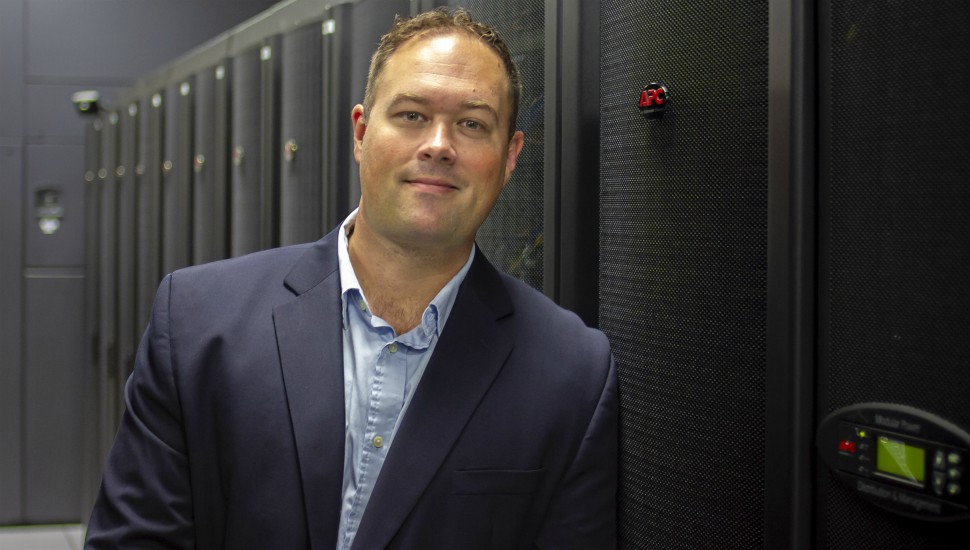As cybersecurity threats on business aviation increase, Josh Wheeler, senior director entry into service and cybersecurity solutions at Satcom Direct leads the battle against the invisible attacks.
As cybersecurity threats on business aviation increase, Josh Wheeler, senior director entry into service and cybersecurity solutions at Satcom Direct leads the battle against the invisible attacks.
How did you get to work in aviation?
Growing up on Florida’s Space Coast I’ve always had an interest in aviation. From the playground I watched shuttle launches and attended air shows at Patrick Air Force base – there was always a fascination with the air and spacecraft. At Florida State University I majored in management information systems, which helps bridge IT with business operations. This led to working with the Federal Aviation Administration, where I helped create a VPN service for Department of Transportation employees. It was then I realised just how important cybersecurity is to mission critical operations.
How has your career developed at SD?
Beginning as a technical training manager, I worked with our 24/7 support team to learn how to troubleshoot SATCOM systems and would occasionally provide on site support for clients. I used the insights I gained to help develop training courses and workshops so customers could maximise our products. This provided a platform from which to develop the entry into service (EIS) offering, which really raised the bar in terms of support. We walk customers through the products, services and technologies on their aircraft at our headquarters in Florida. They leave fully confident in using their SD eco-system of products. As the need for cybersecurity offerings grew, we added our cybersecurity training into the EIS programme. It’s been the perfect organic career progression for me.

Satcom Direct
What does your working week look like?
It’s always busy. SD continues to develop ground-breaking technology, which means I’m regularly involved with training for new services or working with our flight department and customers to predict what industry requirements will come next. Through EIS my team helps gather feedback from leading flight departments, which supports new product development.
I have also become involved in supporting the industry’s awareness of cybercrime. Devising educational programmes, generating white papers, attending industry events, liaising with customers about their concerns and staying updated with cybersecurity developments are all key points in my week.
What is the most challenging part of your week?
Ironically, it’s trying to convince customers that cybersecurity affects them in the air. There’s a belief that if you’re flying, you’re safe from external threats – but that’s not the case, so when a client recognises that the only way to manage cyber-attacks on cabin wi-fi is through implementing safety protocols, it’s a good feeling. It’s also a challenge in the heavily regulated world of business aviation to keep pace with technology changes. The sector is relatively slow moving, while technology moves rapidly. It keeps things interesting for sure.
How is the business of cybersecurity developing and what is SD doing to support the industry?
As aviation becomes more digitised the need to be cyber-aware is becoming imperative. We’ve noticed that there’s been an increase in the number of cybersecurity events so we’re working hard to advance systems that detect, prevent and mitigate attacks. Our basic cybersecurity awareness courses are free for anybody in the industry. Through our CyberSAFE course we train aviation IT professionals on various means of protection. I’m always surprised to see how often attacks are caused by simple, unintentional human errors. It’s our job to highlight vulnerable areas to the sector and help protect them.
What’s the next big thing for business aviation connectivity?
Undoubtedly the digitisation of aviation will continue for the foreseeable future. The aircraft themselves are morphing into computers, with every digitised element making them more efficient. This also serves to enhance the crew and customer experience, with the next phase of advanced avionics reducing pilot workload and cabin connectivity replicating on the ground digital experiences. Add in to this the internet of things, mega data analysis combined with the power of blockchain, the growing range of satellite constellations – then the synchronisation of all phases of operations, flight and customer experience becomes inevitable. In my mind cybersecurity sits at the core of all this business. It’s not really the next big thing, it is here – and awareness is the key.
If you would like to feature in Working Week, or you know someone who would, email your pitch to kate.sarsfield@flightglobal.com






















